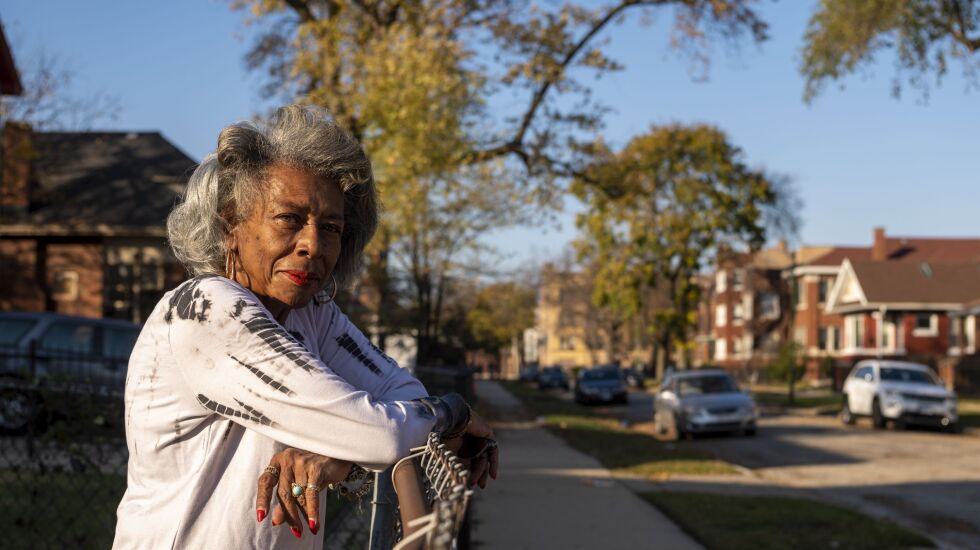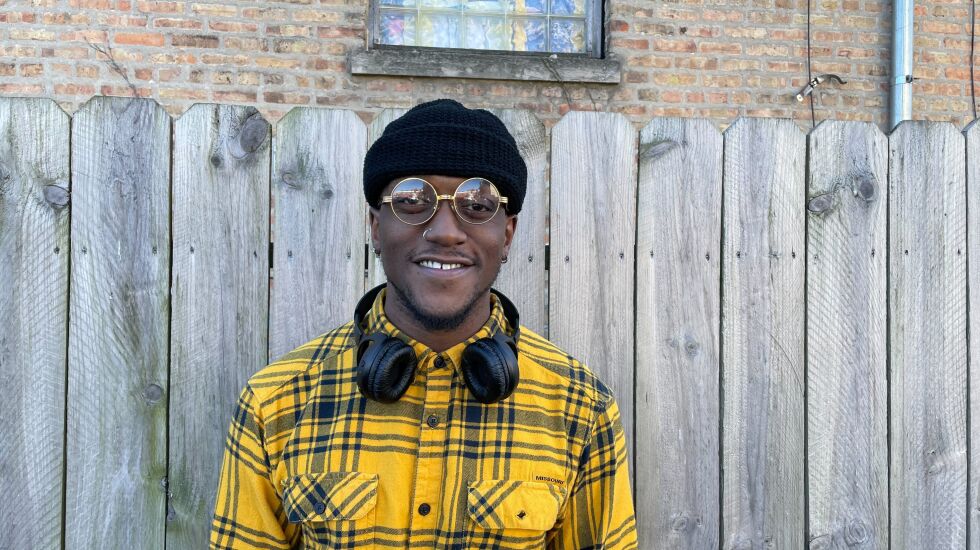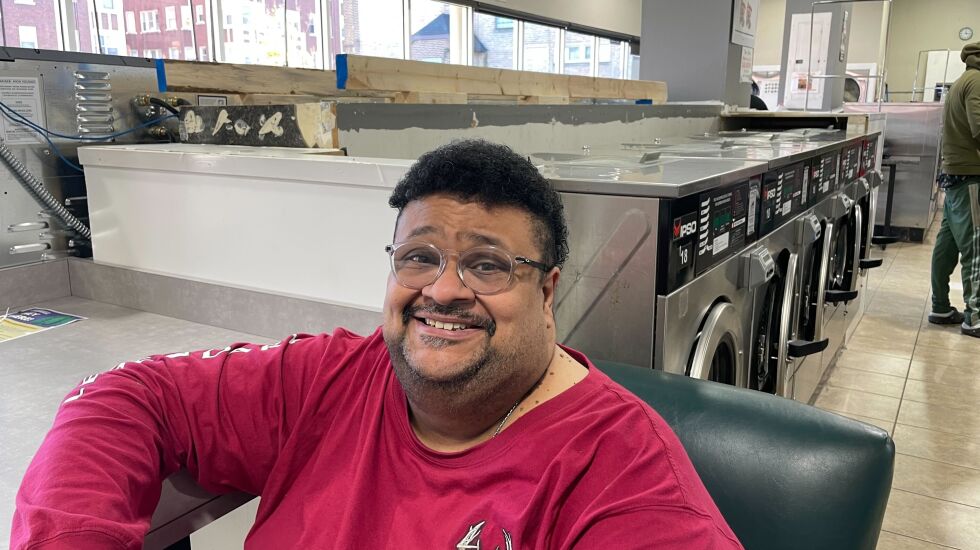
Jennifer Schultz has always loved living in South Shore.
She could walk to Lake Michigan, play tennis at a nearby park — and it once seemed like she could find anything in her neighborhood. But over the years, the 71-year-old has seen a decline in resources ranging from road improvements to programs for the youth.
“We have to travel outside to get stuff that we need,” Schultz said. “There’s not enough restaurants in the neighborhood, other kinds of retail establishments. And we deserve all those things just as well as anybody else. We should be like another Hyde Park.”
Schultz says politicians have not paid enough attention to South Shore, but she thinks that could soon change with the construction of the Obama Presidential Center just north of the neighborhood.
“We will be one of the areas that is looked at as an area where people want to move into,” she said.
Just as the World’s Columbian Exposition in Jackson Park shaped the development of South Shore in the past, residents say the Obama Presidential Center could shape its future, even as some worry about the displacement of current residents.

Residents want more variety in the types of stores, wellness options and mental health resources for South Shore, but many aren’t sure if elected leaders, including those on the Nov. 8 ballot, will ever bring those long-sought needs to the area.
Still, those the Sun-Times interviewed indicated they favored giving Gov. J.B. Pritzker another term even if they didn’t completely agree with all of his policies.
Blue and yellow Pritzker campaign signs dot some of the intersections in this South Side neighborhood known for its bungalow homes. There weren’t any visible signs of Republican challenger Darren Bailey.
Issues that reverberate beyond their community, such as abortion, inflation and crime were among the reasons why many in South Shore said they plan to back Pritzker.
Charles Saunders, 78, has lived in South Shore for decades and plans to vote for the Democratic governor, saying the alternative would be “just really crazy.”
“I will never vote for an anti-abortion person,” said Saunders, as he spent a recent morning reading a book while doing laundry at a South Shore laundromat. “They should leave those kinds of decisions between the patient and the doctor. Why in the heck would government get into something like that? It doesn’t make any sense whatsoever.”
From ‘first-house’ to the White House
South Shore stretches from the lakefront to Stony Island Avenue between 67th and 79th streets, and it is home to more than 53,000 residents. About 92% of them identify as Black, nearly 3% as Hispanic, and nearly 2% as white, according to a Sun-Times analysis of census data.
Murals throughout the neighborhood pay homage to its residents and their history.

The neighborhood started to develop after it was annexed by Chicago in 1889 and given a boost four years later by the World’s Columbian Exposition, which took place in nearby Jackson Park, according to the Encyclopedia of Chicago.
Native Americans, people of German and Irish descent, Jews and African Americans have all called what today is South Shore home, said Carlo Rotella, a professor of American studies at Boston College. Rotella grew up in South Shore and wrote, “The World Is Always Coming to an End,” about the neighborhood.
South Shore was long seen as a “first-house neighborhood,” where middle-class residents were able to achieve upward mobility, Rotella said. He points to one of South Shore’s most famous residents — former first lady Michelle Obama — as an example.

“They move into half of a bungalow in South Shore living with extended family, and the kids go to college,” Rotella said about Obama’s family. “That would be sort of a classic South Shore story, but there is a lot less upward mobility in America than there used to be, and that story less and less describes the experience of American families.”
‘Obama Presidential Center brings promise — and a push’
The economic disparities can be found in the area’s housing.
In 2019, South Shore was ranked first in Chicago for eviction filing rates, according to the Lawyers’ Committee for Better Housing. But in the enclave known as the Jackson Park Highlands, homes often described as mini mansions are listed for more than $500,000, according to Zillow.
About 39% of South Shore residents have a household income of less than $25,000 while nearly 8% have a household income between $100,000 to $149,000, according to the Chicago Metropolitan Agency for Planning.
Those class divisions have made it harder for residents to organize the way they did in the past. An example is a country club, notoriously known for its exclusion of African Americans and Jews, being turned into the now public South Shore Cultural Center, Rotella said.
“It’s harder to find issues that people mobilize together on like that,” he said. “For instance, the classic example was the supermarket closed in 2013, and another one didn’t open for six more years.”
Earlier this year, a City Council committee authorized a $5 million fund that will provide grants to South Shore condo owners and co-op buildings to make building repairs.
But there’s still a push to obtain a community benefits agreement for South Shore before the Obama Presidential Center opens in Jackson Park in the nearby Woodlawn neighborhood.
The Obama CBA Coalition, which includes a variety of community organizations, are demanding things such as more tenant protections, the preservation of affordable housing and a right-to-return policy for longtime residents.

Dixon Romeo, from Not Me We, which is part of the coalition, said one of the biggest obstacles has been the lack of political will from the City Council and Mayor Lori Lightfoot’s office to push for the agreement.
“Regardless of ward, across South Shore, we’ve talked to homeowners, condo owners, tenants who are afraid and worried about displacement,” Romeo said.
‘You constantly have this positive energy going out’
Some residents aren’t waiting for politicians to bring resources to South Shore.
On the 7000 block of South Merrill Avenue, Dianne Hodges and her neighbors want to spur change through their community garden. They were able to restore it without help from elected leaders, Hodges said.
To try to bridge the gap between residents they try to include food giveaways, she said.
“If we’re constantly doing positive things, it’s a little more challenging for you to do negative things,” Hodges said. “Because you constantly have this positive energy going out.”
She, like others in the neighborhood, wants to see more resources to address mental health, domestic violence and more programming for children.

On 71st Street, Julia Perkins said she is on track to open Studio Yogi by January inside a building she is redeveloping. She wants the building to include other tenants that will focus on wellness and health.
Perkins, who has lived in South Shore for 25 years, often traveled to Hyde Park or the West Loop to practice yoga.
“Why do I have to leave my community to enjoy my practice?” Perkins asked. “I think that there are more people in the community that would really like to be engaged with yoga. The philosophy of Studio Yogi is to meet people where they are, not everyone is as limber and as flexible.”
Like Saunders, Perkins said one of the reasons why she supports Pritzker for another term is because she sees abortion as a health care issue.
Jay Christian, 24, has lived for most of his life in South Shore, and he also listed his support for abortion as one of the reasons why he already voted for Pritzker by mail-in ballot.

Christian said he also likes that Pritzker supports the arts. He wants to maintain existing institutions such as the South Shore Cultural Center, and he would like to see more programming for residents once the Obama Presidential Center is finished.
“I feel like they should put more money into preservation of the area as opposed to trying to make it like yuppie and like Wicker Park,” he said.
Bike lanes, businesses — and ‘providing opportunities’
Aaron Henderson moved to South Shore in July 2020, and he also plans to vote for Pritzker. After Bailey labeled Chicago a “hellhole,” Henderson said he wasn’t sure what the GOP challenger would do for the city.

Henderson, 40, said he would like to see more businesses in the neighborhood, and he would like to see improvements to the infrastructure.
“Bring more bike lanes, make sure the CTA doesn’t have all these ghost trains and buses, and just make it easier for people to get where they’re going,” Henderson said. “Of course, we do need safety, that too, but also providing opportunities for people so they have alternatives.”
Crime is one of the biggest issues Desmond Bauer, 54, said he was thinking about ahead of Election Day. He isn’t sure, though, what the governor’s office could do other than to take a page from former Chicago Mayor Jane Byrne who in the 1980s briefly moved into Cabrini Green.

“They don’t know what the community goes through, because they’re not truly in the community where this stuff happens,” Bauer said. “Things have become such a big problem that now it’s starting to spread out where it’s everywhere. It’s like a cancer, it starts out very small and then it spreads.”
Russell Pike, 72, has lived in South Shore for nearly four decades. Like other residents, he also thinks the area needs additional resources to address issues such as mental health. But he thinks there should be another way to pay for those resources.
On his ballot, Pike said he was asked about using taxes to fund mental health resources. He voted yes even though he’s concerned about his own property taxes rising.
“It is something that’s very definitely needed,” Pike said. “But once again, why should just the taxpayers that own homes be the one on the burden for that? I don’t understand how the city puts a budget together and doesn’t incorporate something like that into it.”
Elvia Malagón’s reporting on social justice and income inequality is made possible by a grant from The Chicago Community Trust.








